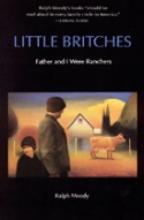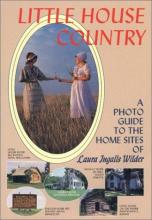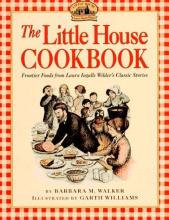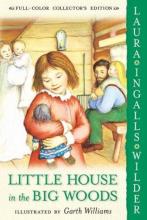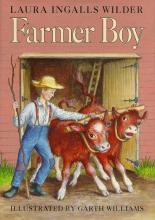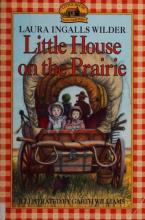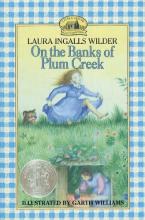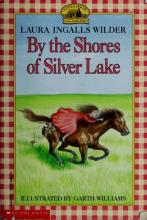No name
Little Britches
Little Britches is the first book in an eight-book series by Ralph Moody and came so highly recommended that I was concerned about being disappointed. We shouldn't have waited; it is brilliant! This book is particularly well-suited to being read aloud and will be enjoyed by every age grouping. It would be a wonderful book to have Daddy read to the family.
The titles in the series are:
- Little Britches: Father and I Were Ranchers
- Man of the Family
- The Home Ranch (overlaps in time with Man of the Family)
- Mary Emma & Company
- The Fields of Home
- Shaking the Nickel Bush
- The Dry Divide
- Horse of a Different Color
Little Britches is the first part of the story of the author's life, set in the early years of the 1900s. When he was 8 years old, his family moved from New Hampshire to Colorado in an attempt to improve his father's health. Life around the turn of the century comes alive for the reader and listeners, and the descriptions of holiday meals, special treats, school days, cattle ranching, and the weather are fascinating. The family faces many challenges that are still faced in Colorado, and the lessons they learn are applicable to all of us. Mr. Moody's father is a wise, soft-spoken, religious man who teaches his son not only what it means to be a rancher, but also what it means to be a man.
We enjoyed this book tremendously, and only partly because we can identify with the weather challenges and the fight for water rights that are a part of modern-day Colorado. We enjoyed it mostly because of the picture of a loving family, living a simple life, and working for the good of all. This story gives a more accurate picture of life on the prairies than do the Little House books, and its appeal spans a wider age range. There area few spots of cowboy-type rough language that are easily ignored if the story is read aloud. We heartily recommend Little Britches!
Frost on the Windowpane
This deceptively-simple supplement to Little House in the Big Woods packs a wallop of meaningful content into easy and fun art and writing assignments. Not only will it will help children understand the book better, but it provides full-fledged lessons in art appreciation and composition.
The bulk of this resource consists of "chapter activities" which generally include three segments:
1. "Discussion" - Simple discussion questions are intended to start conversations about the book and invite the child to compare their own life with Laura's life. Discussions such as these are excellent for reading comprehension, thinking skills, etc.
2. "Writing" - Assignments are simple and related to the story, suc as writing about a special gift you have received for Christmas. The unique thing about these assignments is that they each have a corresponding worksheet in the back of the booklet that help the child to collect his thoughts, organize ideas, and in the process learn to become a better writer.
3. "Art" - The simple art projects employ a process called "discipline based art education". Rather than simply assign a drawing based on the story, the child is presented with a famous work of art (such as Van Gogh's Bedroom by Vincent Van Gogh) which provides a good example of an artistic feature that they will use in their assignment. In the case of Van Gogh's Bedroom, the child sees how the artist made the picture three dimensional (simple instructions are included) and replicates that aspect of the painting into their own artwork (in this case a drawing of the attic). What a great way to apply art appreciation to the child's work (reminiscent of the Suzuki method in music). All of the artwork can be viewed online (websites are included) or purchased in postcard form from the publisher.
Rounding out the booklet are...
Activities before Reading, which includes projects about the four seasons and about the geography of Wisconsin
Activities after Reading, which includes instructions for making little books relating to the story, a three-dimensional diorama of a scene from the story, planning an evening "Little House Style", comparing the child's life to Laura's and some simple recipes.
I"m very pleased to recommend this very well-thought-out booklet as a worthwhile, family-friendly resource. Suitable for a wide age range, especially grades one thru five.
Little House Country, A Photo Guide to the Home Sites of Laura Ingalls Wilder
My family and I may never be able to visit the "Little House" country in person, but this photo-filled book makes us feel as if we were there. This is a picture book in the most literal sense of the word! Each of the full-color, professional photographs has a caption of several sentences describing the photograph and some interesting details about the scenes in them.
The photographer traveled through Wisconsin, Kansas, Minnesota, Iowa, South Dakota, Missouri, and New York to take these pictures. We can see the footbridge over Plum Creek in the summer time and the sun rising over a wintry Silver Lake. We are taken inside Laura's prairie schoolhouse and into the writing study she used as an adult. We are shown a picture of the Ingalls' family Bible with Ma's beautiful handwriting and another of Pa's fiddle. These photographs truly reinforce the idea that the "Little House" books are telling the story of a real family. This book is a "Must Read" for any fan of the series!
The Little House Cookbook
For all those of you whose mouths were watering at all the descriptions of food in the Little House Books (particularly Farmer Boy!), Barbara Walker (inspired by the requests of her own children) has done a great deal of research in compiling lots of recipes (over 100) and other background information on the meals from these books.
Little House in the Big Woods
The first in the famous "Little House" series (circa early 1870s), this book tells of Laura's early childhood in rural Wisconsin. A wonderful story in itself about life in a simpler time, Laura explains in fascinating detail many of the tasks necessary to sustain life, prepare for winter, etc. We are introduced to cheese and butter making, the preparing of meats for winter-storage, and much more. Laura, her two sisters and her Ma and Pa live in the midst of a large forest where the closest neighbors are wolves and deer (and an occasional bear). While adults might assume that such a lifestyle would bore children of today, most are fascinated by Pa's stories in front of the fire, the excitement of visiting town and picking out things from the store for the very first time and the glorious dance at Grandpa's to celebrate "sugaring-off". After reading this aloud to the children, my husband is still bugging me to try to make cheese with the kids.
The story is widely enjoyed by children (and adults) of all ages and makes an especially enjoyable read-aloud for the little ones (as early as two or three years old).
Farmer Boy
This mouthwatering book isn't about Laura. It is about her future husband, Almanzo Wilder, and told through his eyes. He works (hard) on his father's sucessful farm in upstate New York. As would be expected from the perspective of a hardworking young boy the book lingers on FOOD. They ate pretty well too! They have fresh fruits and vegatables, they make their own butter (some of which they sell for – about a buck a pound! – imagine that). The pies, the meat etc. etc. etc. Each is described just well enough that you want to make some for yourself. But this was a growing farmer boy – I am afraid his rich diet might not pass muster with the current health nazis – maybe that's why your mouth waters so much. He also tells how he works off all those calories... making tools, shearing sheep, planting and harvesting – all in addition to his daily chores.
Little House on the Prairie
In this story, the Ingalls family ventures out from their cozy log house in Wisconsin to the open prairie of present-day Kansas to make a new start. They spend a very challenging year building a house from scratch and dealing with tensions between other settlers and the local Indians. This is the classic story for which the entire series is named – filled with long journeys over open prairie in a covered wagon, building a log house, and wondering over mysterious Indian trails.
On the Banks of Plum Creek
The dog, which has been trotting in the shadow of the wagon for maybe a hundred miles, lays down to rest. The family has just moved from Indian territory to western Minnesota. Pa does a little negotiating and ends up trading the horses that helped them move for the sod hut of a Norwegian farmer who is ready to move farther west. So they begin their life at the new home. The delights of childhood leisure are described, not so much reminiscing as the matter-of-fact way that a child who simply enjoyed it would tell. There is plenty to do besides just swim in the creek and make friends with the crab in the creek. Pa forecasts great fortunes for the family when the wheat gets ready to be harvested. But Laura has told us the most enjoyable stories about a family that seems to undergo some of the most trying times you can imagine. They are beset by misfortune again and again – and yet life goes on – life in this family goes on and gets better in ways that are never measured by money or possessions.
I begin to be amazed at this in this book (the second I have read). I am more and more so as the series continues how hard a life they had – and how they deal with the sour turns that are handed to them. Their trials are far beyond what most of us can imagine going through. It is hard to read – knowing that the story is true. And yet the lesson in hope and character is incredibly valuable. The reader will often have a chance to measure his own sufferings and setbacks against those of the Ingalls family – and see how easy he has things!
By the Shores of Silver Lake
Continue the adventures of the Ingalls family as they make yet another move, working in a railroad camp, and deal with Mary's recent loss of sight. The reader may discern that Laura begins to develop her story-telling abilities by faithfully following her Pa's request to be Mary's "eyes". The railroad workers move along and the Ingalls family stick it out for one very quiet winter before being present for the establishment of a brand new town.

